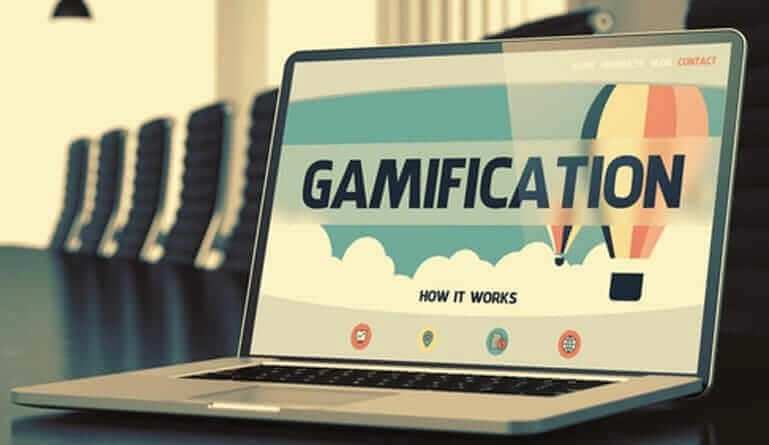
Are you tired of boring training methods that fail to engage your team? It’s time to level up your training game with gamification! In this blog post, we’ll show you how to implement a gamification platform to transform your training methods and keep your team motivated and excited. Say goodbye to dull lectures and hello to interactive, fun learning experiences that will drive results for your business. Let’s dive in!
Introduction to Gamification
Gamification is the process of incorporating game design elements and principles into non-game contexts, such as training and learning programs. It involves using techniques like point systems, leaderboards, challenges, and rewards to engage and motivate individuals towards a specific goal or objective.
The concept of gamification has gained significant traction in recent years due to its ability to enhance user engagement and participation. By adding a fun and competitive element to otherwise mundane tasks, it can make learning more enjoyable and effective for individuals.
One of the main advantages of gamification is that it taps into our natural desire for competition and achievement. Human beings are inherently driven by rewards and recognition, which makes them more likely to participate in activities that offer these incentives. By integrating these elements into training methods, organisations can encourage their employees to actively engage with the content rather than just passively consume it.
Moreover, gamification also leverages our innate love for games. Games have been an integral part of human culture since ancient times. They allow us to escape from reality while still providing a sense of accomplishment when we complete challenges or reach new levels. By incorporating gaming elements into training programs, organisations can tap into this enthusiasm for games and use it to drive motivation and performance among employees.
Another key benefit of gamification is its ability to create a sense of community within teams. By implementing leaderboards or team challenges, individuals can work together towards a common goal. This fosters collaboration among team members who may not have interacted much before. As they compete against each other or strive towards collective achievements, they form stronger bonds with their colleagues.
Furthermore, gamification also has the potential to increase knowledge retention rates among learners. Traditional training methods often involve long lectures or presentations that are easily forgotten after some time. However, by making the learning experience interactive through games and challenges, individuals are more likely to remember the information they have learned.
Gamification has the power to transform training methods by making them more engaging, motivating, and effective. By tapping into our natural instincts and leveraging the fun and competitive elements of gaming, organisations can create a more conducive learning environment for their employees. In the following sections of this guide, we will discuss how to successfully implement a gamification platform for your team.
Understanding Your Team’s Needs
Understanding your team’s needs is a crucial step in successfully implementing a gamification platform for training. As an organisation, it is important to recognize that each member of your team has different learning styles, preferences, and motivations. By understanding these individual needs, you can tailor the gamification platform to better engage and motivate your team.
The first step in understanding your team’s needs is to conduct a thorough analysis of their current skill sets and knowledge gaps. This can be done through surveys, assessments, or one-on-one discussions with team members. By identifying the specific areas where your team requires improvement, you can design targeted game-based activities that address those areas.
Next, it is essential to consider the demographics and personalities of your team members. Different age groups may have varying levels of comfort and familiarity with technology or gaming elements. Similarly, introverted individuals may prefer individual challenges while extroverts may thrive in competitive group activities. Your gamification platform should take into account these factors to ensure inclusivity and effective engagement.
Another aspect to consider is the level of experience within your team. New hires may require more foundational training compared to seasoned employees who may benefit from advanced challenges or refresher courses. By grouping individuals based on their experience levels, you can create customised game paths that meet their unique needs.
Furthermore, understanding the motivators for each member of your team is key in designing a successful gamified training program. Some individuals may be driven by competition or rewards such as points or badges while others may find intrinsic motivation in learning new skills or problem-solving challenges. By incorporating a variety of motivators into the platform, you can cater to different preferences and keep all members engaged.
It is important to regularly gather feedback from your team throughout the implementation process and make adjustments accordingly. This will not only help you understand what aspects are working well but also identify any potential roadblocks or areas for improvement.
Understanding your team’s needs is a critical component of implementing a gamification platform for training. By considering factors such as skill gaps, demographics, personalities, experience levels, and motivators, you can design a tailored and effective training program that engages and benefits your team as a whole. Regular feedback and adjustments will ensure continuous improvement and success in transforming your training methods.
Choosing the Right Gamification Platform
Gamification has become increasingly popular in the training and development world as a way to engage and motivate learners. With so many gamification platforms available on the market, it can be overwhelming to determine which one is the right fit for your team. In this section, we will discuss key considerations when choosing a gamification platform for your organisation.
1. Identify Your Training Objectives
Before selecting a gamification platform, it’s crucial to identify your training objectives. What skills do you want your team to acquire? What behaviours do you want them to change? By clearly defining your goals, you can narrow down the features and capabilities that are essential in a gamification platform.
2. Evaluate User Experience
The success of any learning program depends on how engaged and motivated the learners are. When evaluating different gamification platforms, consider the user experience (UX) design. Is it visually appealing? Is navigation intuitive? Will it keep learners interested and motivated throughout their training journey?
3. Look for Customisation Options
Every organisation has its unique culture and values, which should be reflected in their training programs. Consider whether the gamification platform offers customization options such as branding, adding company-specific content or activities that align with organisational goals.
4. Assess Reporting and Analytics Capabilities
One of the significant advantages of using a gamification platform is its ability to track learner progress and provide data-driven insights into their performance. When choosing a platform, look for reporting and analytics features that align with your specific needs. Do they offer real-time tracking? Can you export data into other formats for further analysis?
5. Check Integrations with Existing Systems
Your organisation may already have existing systems in place such as Learning Management Systems (LMS) or human resource management software that need to integrate seamlessly with the new gamification platform. It’s essential to ensure compatibility between these systems before making a final decision.
6. Consider Mobile Accessibility
In today’s digital age, learners expect to access training content on their mobile devices. When evaluating a gamification platform, consider its mobile accessibility and whether it offers a responsive design that can adapt to different screen sizes.
7. Review Support and Training Resources
Implementing a new gamification platform requires support and resources from the provider. Research the level of customer support they offer and whether they provide training materials for administrators to effectively use the platform.
By considering these factors, you can choose the right gamification platform that aligns with your organisation’s needs and goals. Remember, the success of any training program depends on how well it is implemented, so take the time to evaluate your options carefully before making a decision.
Implementing the Platform: Step-by-step Guide
Now that you have decided to implement a gamification platform for your team’s training, it’s time to get started. This step-by-step guide will walk you through the process and help ensure a successful implementation.
Step 1: Define Your Objectives
The first step in implementing any new system is to clearly define your objectives. What do you hope to achieve with the gamification platform? Do you want to increase employee engagement, improve learning outcomes, or track progress more effectively? By setting clear and measurable goals, you can align your implementation strategy with your desired outcomes.
Step 2: Choose the Right Platform
There are many gamification platforms available in the market, each with its own unique features and pricing plans. Take some time to research and compare different options before choosing one that best fits your team’s needs. Consider factors such as customization options, user interface, compatibility with existing systems, and customer support.
Step 3: Plan Your Rollout Strategy
Before introducing the platform to your team, it’s important to plan a rollout strategy. This may include training sessions for employees on how to use the platform effectively or creating promotional materials highlighting its benefits. It’s also crucial to communicate clearly about why this change is being implemented and how it will benefit both employees and the organisation.
Step 4: Integrate With Existing Processes
To ensure a smooth transition, make sure that the gamification platform integrates seamlessly with your existing processes. This may involve syncing data from HR or learning management systems or creating a single sign-on functionality for employees. This not only saves time but also encourages adoption among employees who are already accustomed to using these tools.
Step 5: Customise Content and Design
One of the key advantages of using a gamification platform is its ability to create engaging and interactive content tailored specifically for your team’s needs. Take advantage of this by customising game mechanics, visuals, and content to align with your training objectives. This will not only make the learning experience more enjoyable but also increase its effectiveness.
Step 6: Monitor and Evaluate
Once the platform is up and running, it’s essential to monitor and evaluate its impact regularly. This will help you track progress towards your objectives and identify areas for improvement. Use analytics provided by the platform to gain insights on employee participation, completion rates, and performance.
Implementing a gamification platform for your team’s training can greatly enhance their learning experience and drive better results. By following these steps, you can successfully introduce this innovative method into your organisation and reap the benefits of gamified learning.
Conclusion
In today’s fast-paced and ever-changing workplace, it is important to constantly adapt and improve training methods in order to keep employees engaged and motivated. Implementing a gamification platform is an innovative way to transform traditional training into a more interactive and enjoyable experience for your team. By incorporating game-like elements, employees can be incentivized to learn new skills and knowledge while also fostering healthy competition among colleagues. From increased engagement to improved retention rates, the benefits of using a gamification platform are endless. It’s time to take your training methods to the next level by embracing this exciting trend in employee development.





